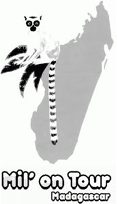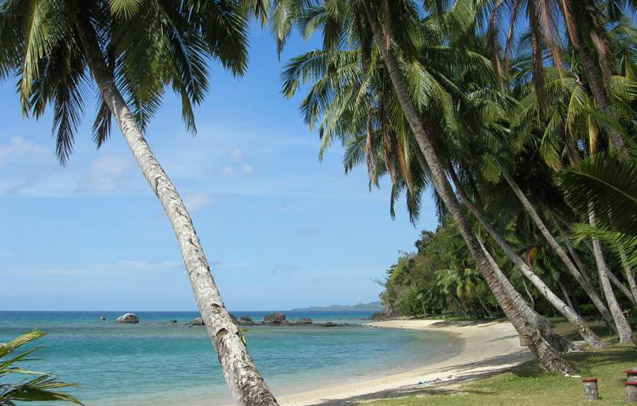
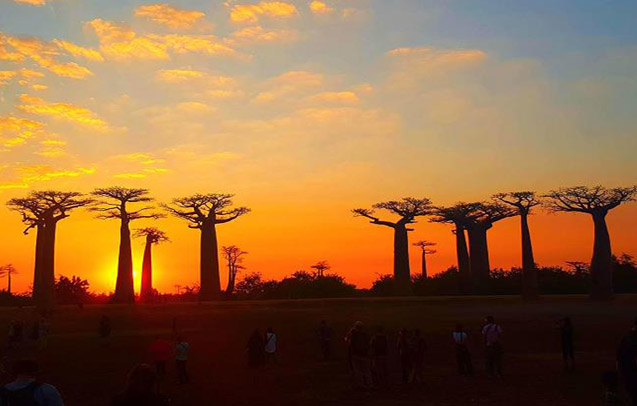
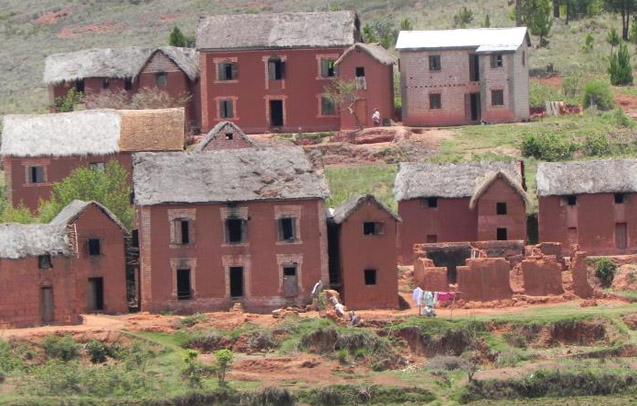
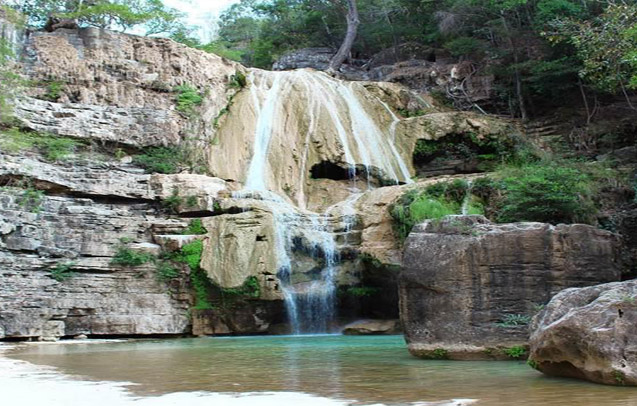
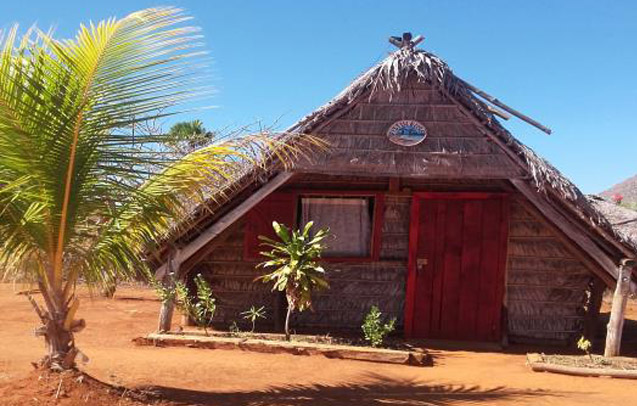
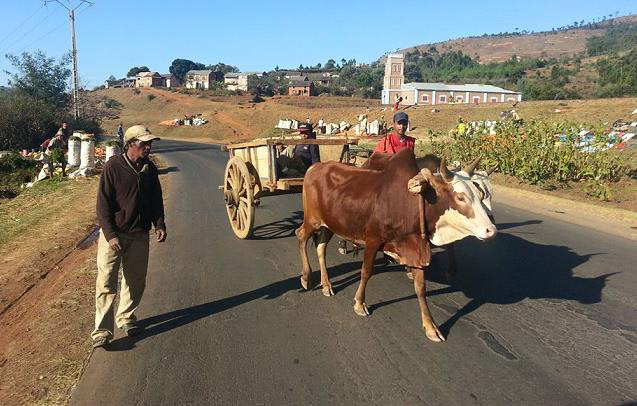
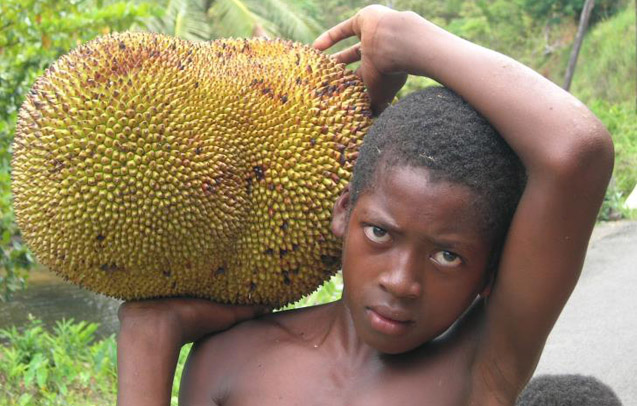
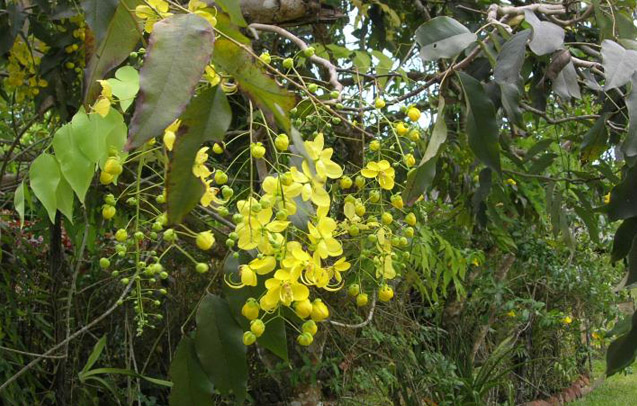
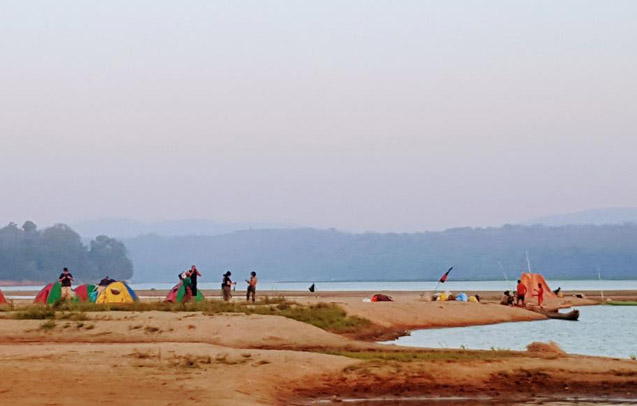
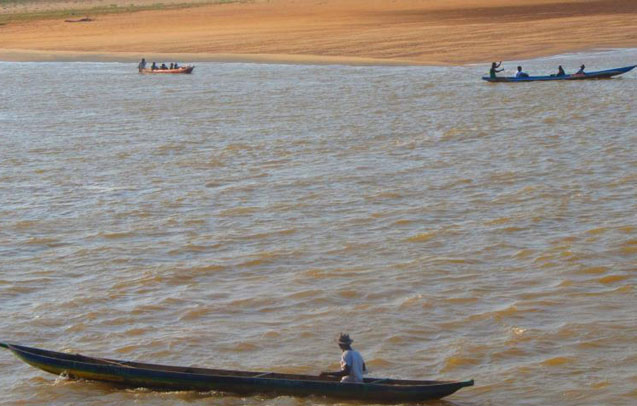
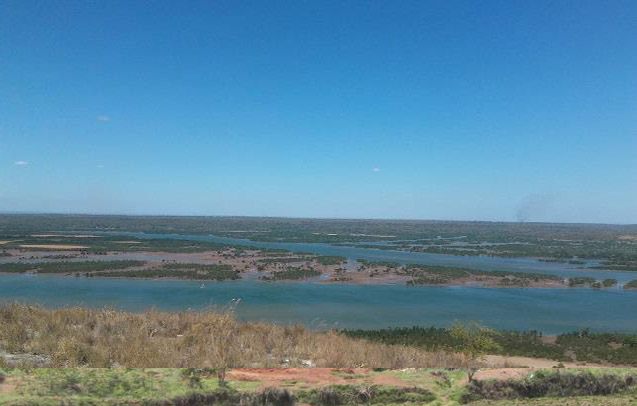
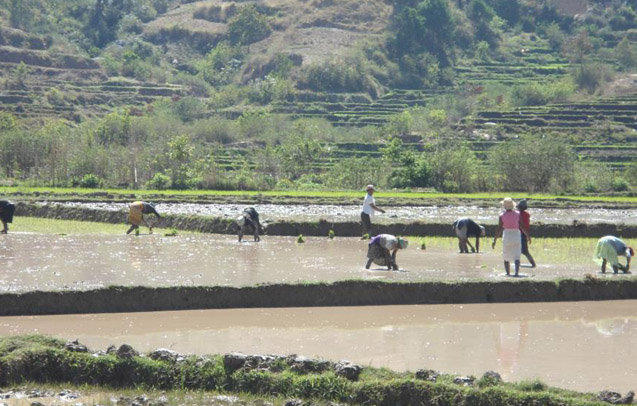
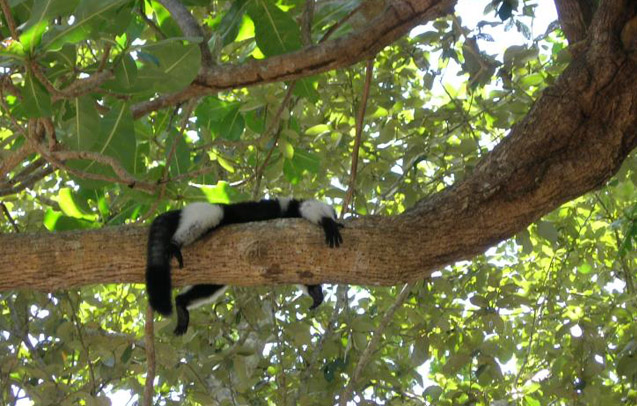
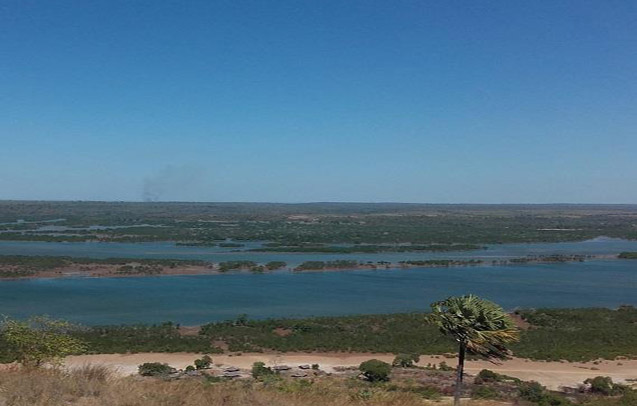
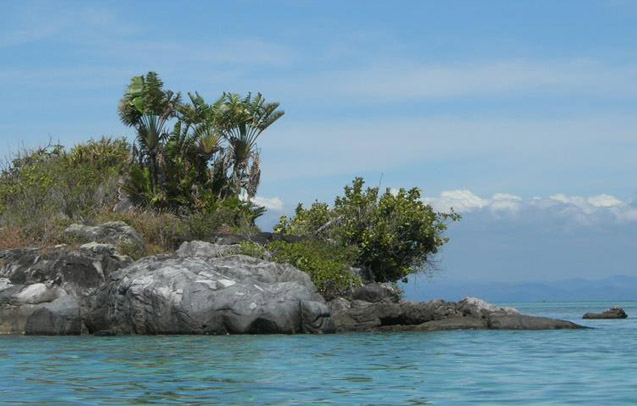
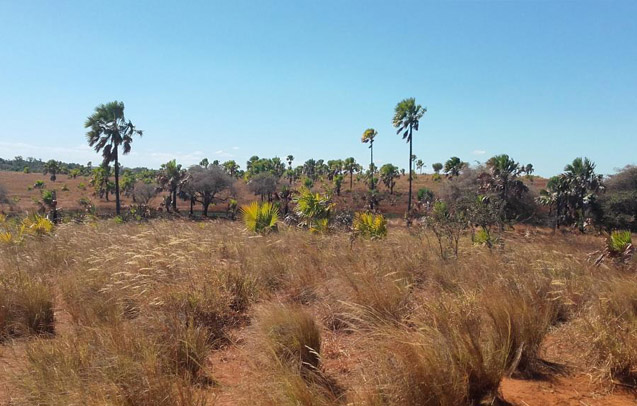
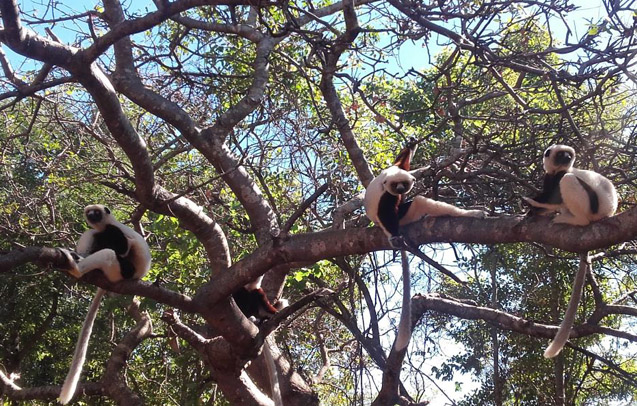
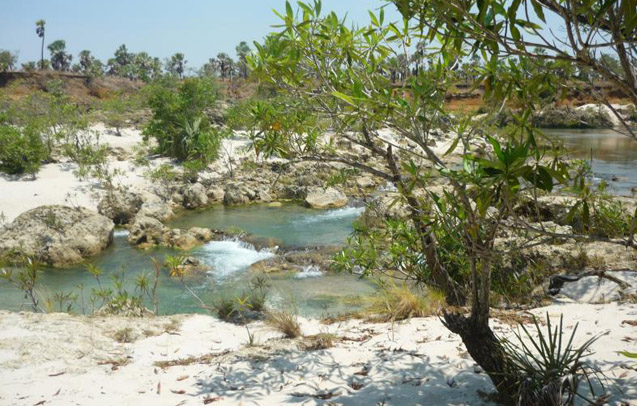
Madagascar is located in the Indian Ocean, 400 km east of the African coast, at the level of Tanzania and Mozambique. The world’s fourth largest island, after Greenland, New Guinea and Borneo, covers an area of 587,040 km², France and the Benelux combined. It is 1,580 km from north to south; and 580 km from east to west with 4,828 km of coastline. The highest point is 2876 meters (Maromokotra in Tsaratanana).
Language spoken: Malagasy
Originally, Malagasy borrowed a words from the Sanskrit (Indo-European) and Arabic, but received an important lexical contribution from the languages Swahili, Makhwa, a tonal language of the Bantu language family, and later from the European languages, including English and French.
As far as writing is concerned, Malagasy was first written in Arabic characters, which resulted in a written literature called «arabico-Malagasy»; then the king Radama I imposed the Latin characters and had the Bible translated into Malagasy.
Independence Day: 26 June 1960
Official languages: Malagasy, French
Capital: Antananarivo
Area: 587 040 km²
Population: 25,570,000 population
Density: 44 hab/km²
Time zone: UTC+3
National anthem: Ry Tanindrazanay Malala ô (O, our beloved country)
Internet domain: . mg
The major cities of Madagascar (in 2011):
Antananarivo: 1,392,000 inhabitants
Antsiranana: pop: 82,93inh.
Fianarantsoa: 167,200 inh.
Mahajanga: 154,650 inh.
Toamasina: 206,380 inh.
Toliary: 115,320 inhabitants.
The official currency has been the ariary since 1 January 2005. This name replaces the Malagasy franc (Fmg) inherited from French colonization. 1 ariary = 5 Fmg
51% of Christians (26% Catholic and 23% Protestant),
47% of animists (traditional beliefs): Animists practice Famadihana, a cult of ancestors that involves changing the shroud of the deceased, cleaning their bones, and calling for their participation in a feast and banquet.
1.7% of Muslims
0.3% claim other religions (Buddhism, Taoism, Hinduism, etc.)
Madagascar is located in the Indian Ocean, 400 km east of the African coast, at the level of Tanzania and Mozambique. The world’s fourth largest island, after Greenland, New Guinea and Borneo, covers an area of 587,040 km², France and the Benelux combined. It is 1,580 km from north to south and 580 km from east to west, with 4,828 km of coastline.
The highest point is 2876 meters (Maromokotra in Tsaratanana).
Together with South America, Southern Africa, the Indian subcontinent, and Australia, Madagascar remains one of the remains of Gondwana, a continent engulfed or dislocated during the geological cataclysms of the secondary era. It is also called «the continent island», «the Grande Ile», or «the Lemuria» because Madagascar is home to 90% of lemurs.
Two climatic seasons are officially distinguished:
– dry season: from April to October, temperatures can range from 3°C in altitude to 34°C on the shores of the South-West.
– and the rainy season: November to March. Runways can turn into a quagmire. Some sites are closed with rain barriers. On the other hand, in November, it is the season of the letchis harvest, they are red, juicy and abundant.
The ideal season to see everything, everywhere, with a good temperature and very little rain, is from September to October. Period of annual whale migration, period of bird and orchid observations. October is the time of mangoes, of a wide variety, of all sizes
Les Hautes Terres (Antananarivo region): the dry season lasts from April to October, with an austral winter period from June to August. Rainfall is heavy but short, from mid-November to March only.
The west coast: it is the driest and sunniest coast in Madagascar.
The east coast: it rains all year round, especially from December to March, the official rainy season. The months of September, October and November are the driest. The Region is to visit because it represents dense and virgin forests. It is rich in lemurs, amphibians and endemic plants. Provide a kway for fine rains.
The south-west and extreme south are semi-desert with rainfall of 0.3 metres per year.
Cyclonic season: officially from mid-December to mid-April. To be avoided if possible
Merina: «those of the heights»; of Malayo-Indonesian origin, they reside on the highlands, in the center of the island, they are strong in negotiations. They are merchants.
Betsileo: «those who are invincible»; they live in the region of Fianarantsoa (center-east) and are excellent rice farmers and artisans of wood.
Betsimisaraka: «those who do not separate»; the most important tribe living along the east coast, they grow coffee, cloves and sugar cane.
Sakalava: «those of the long valleys»; they occupy a very vast territory on the whole west coast, from the north to Tuléar (to the west). They are farmers and ranchers.
Antaisaka: «those who come from the Sakalava».
Antandroy: «those of thorns», they live at the southern end of the island.
Mahafaly: «those who make taboos», neighbours of the Antandroy, they are sculptors.
Vezo: A nomadic people who live with fishing and who have been able to preserve traditional fishing techniques.
Bara: of Bantu origin, they are often zebus breeders.
Antakarana: «those of Ankara: the cliff»; they are mainly fishermen and breeders (north of the island).
Antemoro: «those of the coast», they are largely farmers.
Antaifasy: «those who live in the sands», on the east coast.
Masikoro: farmers from the south of the island.
Antambahoaka: a South-East group of Arab origin and Islamic traditions.
Tsimihety: «those who do not cut their hair», living in the Northwest, they are breeders and rice farmers.
Tanala: «those who live in the forest», live on the cliffs of the east coast, in the forest; they hold a great knowledge on medicinal plants and sculputure.
Bezanozano: «those with many small braids», they are foresters from the east coast.
Sihanaka: «those who wander in the marshes», they live in the area of Lake Alaotra, farmers (northeast).
Madagascar is a country rich in traditional customs and practices and which preserves traditional practice. There is collective circumcision among the Antambahoaka every 7 years. Famadihana: the death reversal among the Merina in winter. The Fitampoha, relic baths at Fitampoha, relic baths at the Sakalava every 10 years.
Malagasy people have respect in their ancestors, who converge the human being with the Supreme Being called “Zanahary”, the Creator or “Andriamanitra”, the Perfumed Lord. The Malagasy respect the ages. Living, they live in the same house and dead, they envelop themselves in the same tomb.
Economic growth has been sustained over the past four years, rising from 2.3% in 2013 to 5% in 2018 and projected to 6% in 2020. Tourism is an engine of growth, and one of the largest currency-producing sectors in Madagascar, with just over 300,000 tourists in 2016 and a target of 500,000 tourists in 2020.
Actions to promote the destination Madagascar and Malagasy tourism products through, among other things, the multiplication of the display cases of Madagascar abroad are carried out. International events are on our doorstep, including ITM International Tourism Fair Madagascar, ATBC Congress 2019 Association for Tropical Biology and Conservation, the FIDIMA Investor Forum in Madagascar and Africa.
Major infrastructures are launched. As the renovation of the international airports of Ivato Antananarivo and Fascène Nosy be, the renovation of the port of Tamatave. New sites, new tourist products, new hotels and the standardisation of tourist activities and tourist establishments are being set up. The promotion of safety is not the least of them.
Tourism is expected to continue to grow , due to increased public-private partnerships. The development of ecological tourism, of discovery tourism, goes hand in hand with social development.
Madagascar preserves an undeniable natural and cultural wealth. The development of fair and sustainable tourism generates a direct benefit to the local population.
The lemurs are the most representative of the island. The smallest is the Microcebus, no larger than a mouse. And the Indri is the biggest, as tall as a boy. The chameleons are among the most beautiful in the world. The butterflies have the largest variety, reknown like the Comet. Malagasy soil contains well-preserved fossils, in the southern sands. It holds eggs of the aepyornis or even dinosaurs.
Madagascar is recognized as a living museum. Its nature is characterised by a diverse set of ecosystems housing very particular species, whose degree of endemism is 80% for wildlife and 90% flora. Among the leading figures of flora:
- The Takhtajania, emblem of Madagascar, the Winteraceae family, a pre-historic plant dating from 120 million years ago, on the northeast side of Andapa.
- Seven varieties of baobab versus one for all of Africa.
- The “carnivorous” Népenthes, whose valve closes on the imprudent insect.
The craft sector is a strong sector linked to economic development and rural development. Very diverse and varied, from one ethny to another, crafts play a major role, an income supplement, for the women and children of farmers and fishermen.
The variety of culture, the geographical remoteness from one village to another, favoured the distinction of different customs, hairstyles and crafts. Crafts reflect the differentiation and daily life of Malagasy people.
A sector poorly organized and poorly developed, the craft sector is beginning to be known and is beginning to export. Production is very limited, and mass production is far from being in use, but training is structured with local associations and schools. The professionalism is starting to be the key word.
E-commerce is a sector that is not yet sufficiently developed in Madagascar.
The Visa card is used in major cities, where you will find vending machines (ATMs) and where some tourism providers accept payments by this method of payment. MasterCard has recently been accepted by CA-BNI distributors. However, it is rarely accepted as a means of payment. Other international cards, such as the American Express, are virtually useless on the island. Travellers’ cheques are not accepted.
